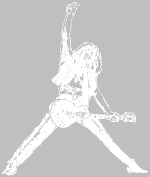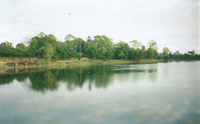GIF vs JPEG
Many web authors save images in the wrong format. I've lost count of the number of times I've seen a JPEG image on the web when it should really have been saved as a GIF. I can usually tell just by looking at the image.
What is the difference between GIF and JPEG?
GIF
GIFs can display anything up to 256 colors. You can use image editing software (such as Adobe Photoshop or GIMP) to manipulate each individual color to provide you with a nice crisp image. You can also reduce the number of colors so that the image is smaller and loads faster on your web page.
GIFs have a file extension of .GIF.
JPEG
JPEGs, as opposed to GIFs, can display millions of colors and therefore are better for images such as photographs. You can also manipulate JPEGs with image editing software, however rather than manipulating each color, you adjust the level of compression that will determine the end file size.
If you incorrectly save an image in JPEG format, you might notice that it's not as clean as it could be. If you go back and save the original image in GIF format, you will notice that it becomes much cleaner. This is particularly obvious when your image contains text.
JPEGs have a file extension of .JPEG, .JPG, or .JPE.
When should I use GIF?
GIF is better for images with less colors, particularly flat colors. If an image loses quality after reducing the number of colors to less than 256 colors (via your image editing software), don't save it in GIF format, better to use JPEG. GIFs are ideal for logos, drawings, and cartoons.
Examples of GIF usage:


When should I use JPEG?
JPEG is better for images with many colors, such as photos. They are not good for the type of images that GIFs are good for (less color and flat color). With these images, JPEGs actually reduce the quality of the image.
Example of JPEG usage:

What does GIF stand for?
Graphics Interchange Format.
What does JPEG stand for?
Joint Photographic Experts Group.